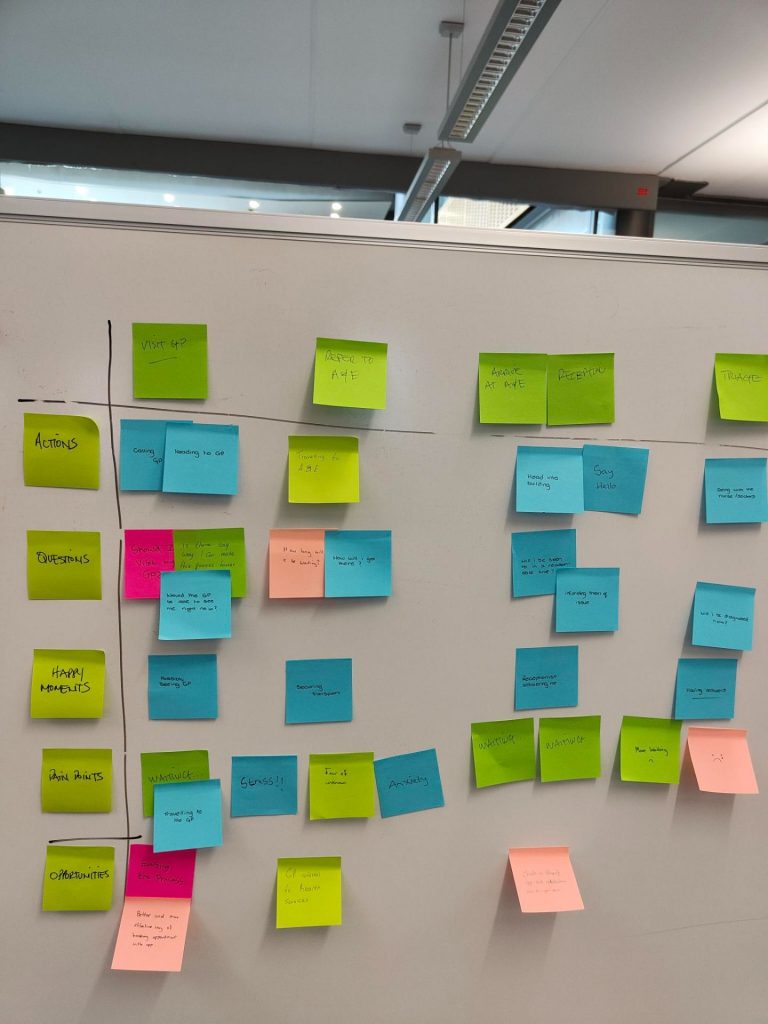Prologue
This week we looked at design sprints. We took a broad look at design sprints and ran through a number of techniques you would expect to see during a typical sprint. During class this week, we did a 5 hour design sprint session in groups.
What are Design Sprints?
The Design Sprint is a proven methodology for solving problems through designing, prototyping, and testing ideas with users. Design Sprints quickly align teams under a shared vision with clearly defined goals and deliverables. Ultimately, it is a tool for developing a hypothesis, prototyping an idea, and testing it rapidly with as little investment as possible in as real an environment as possible.
The Problem
There is too much pressures on the hospitals. How can we ease the pressure on the A&E Department?
I worked with Sean, Florence and Cormac in a group of 4. We followed the 6 point stage to produce a solution.
A design sprint consists of 6 stages. Each of which we would advance through over the span of 5 days, the twist is we would have to do it in 5 hours.
- Understand – Explore
- Define – Focus
- Ideation – Tinker
- Decide – Focus
- Prototype – Make
- Validate – Focus
In the first stage we wrote down a list of “How might” or “How can” we questions. Then we catergorised them together and selected the best idea and moved onto the next stage.




Images Courtesy of Sean who took them for the group.
The Solution
Our outcome was an app that provided the paitent with a faster way to get through triage and straight to seeing a doctor or nurse. This was to stop people going to A&E whenever they had minor issues that could be resolved over a phone consultation. The app worked in a way that used a special code given to the patient by their GP to show at the hosptial. The main aspect we looked at trying to achieve was making hosptials more automated in a way. This meant that instead of a receptionist, a machine in which you could scan your QR code at would mean that you can bypass any delays.
Overall I was pretty happy with the outcome, myself and my team members worked really well. We had a good healthy debate about how we could overcome the issue and agreeing on a solution. We spent a lot of time on the first stage of discovery, this was because we wanted to find a good solution that we felt could benefit the patient and the hosptial in the process. In the end we finished the design sprint with a solid idea.